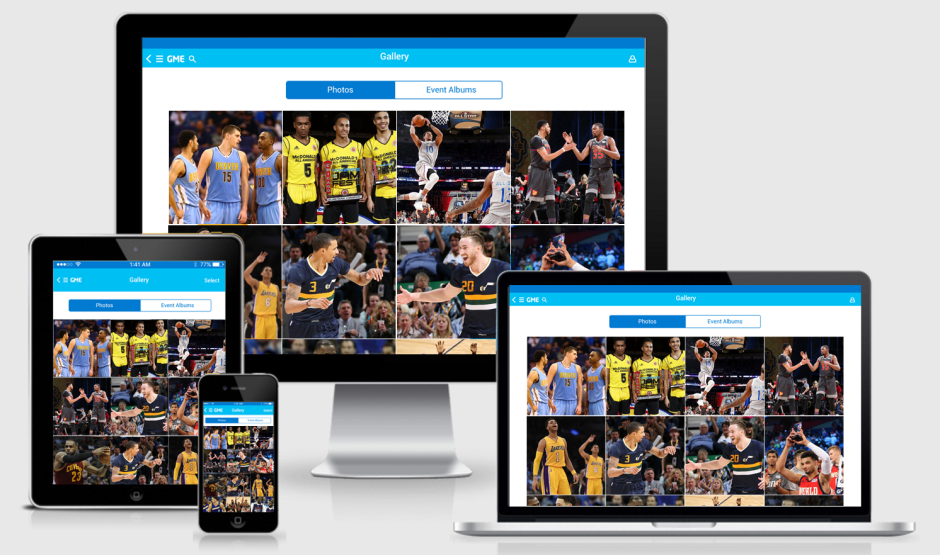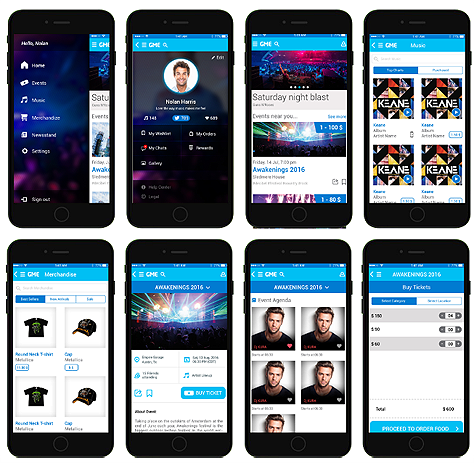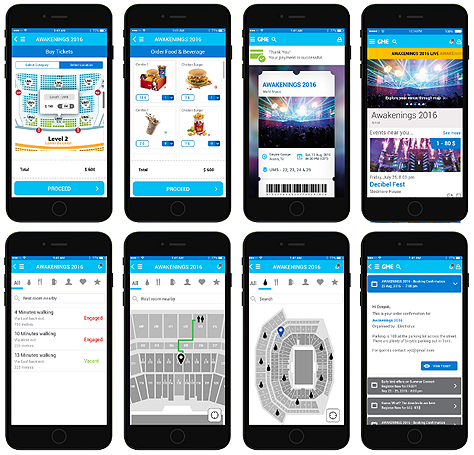Consumer Journey
89% of the organizations expect to compete primarily on customer experience by 2016
Gartner Research, 2015
Poor customer experiences result in an estimated $83 billion loss by US enterprises each year because of defections and abandoned purchases.
Forbes, 2013
Only 24% of the companies measure Customer Experience (CX) across channels while the rest measure either at one such touch point.
Forrester Report, 2014
Companies too often shy away from focusing on the emotional dimension of CX because emotions seem abstract, intangible, and irrational. What they don’t realize is that emotions are actually quite predictable: They just follow a different set of rules than rational thought. When CX pros better understand how emotions work, they’re better able to guide their firm towards making positive CX the norm.
Forrester Report, 2015
The Story
On a summer afternoon, when I was all set for a big day at one of the exclusive branded outlets as a salesman for a major clothing brand in Chennai, India, a hi-rated customer walks into the clothing store with a simple problem. He had bought branded clothing in the US and wanted an exchange in India. While the company didn’t have a procedure for such a transaction, the options for the customer would be to:
- Speak to the store in-charge.
- Call the customer care
- Send an email
- Post a comment on Social Media
For the organization, the customer visiting this local store with a specific need is a Touch point. And this customer could have many such interactions with the brand after buying the product. These touch points are often disconnected with most organisations either due to their vastness or minimalist expertise on Customer Experience. A touch point is basically the moment of time at which interactions take place while a channel is the medium through which such macro interactions are experienced.
Touch point
A micro moment of interaction involving a specific human need at a specific time and place.
Channel
A medium of interaction with customers or users.
So a Store Manager, Call Centre, Email and Social media are channels to a customer to express his concerns according to the above example. To design successful products organizations need to feel the emotion, understand, engage and measure experiences behind every single touch point by identifying Channels, Opportunities and Constraints.
What could be the emotion of the hi-rated customer when he wanted to speak to my store in-charge? How was he feeling? What are his motivations for buying the product? How does he understand the product? What does he think before and after buying the product? How and when does he use the product? What is the impact of using or not using the product? (Ref Figure 1)
Figure 1 – Different faces of consumer emotions

This augmented service approach provides an end to end Omni-channel Experience. Omni-channel is more social and influential, and understands when customers decide to buy or not buy a product or a service.
Omni-Channel
A combined and cross-referenced medium of interaction between the organizations and customers/ users.
Executing an Omni-channel strategy requires a fundamental shift from an operational standpoint to breaking the silos of individual operative entities with the organization.
To name a few brands like Disney, Virgin Atlantic and Bank of America have successfully executed these and if you have ever been a customer with these brands I hope you would relate to and feel the connected experience.
Figure 2 – Illustration on Omni channel approach

It is the organization that needs to set those cross-referenced common experience across all channels, devices, and teams. It is important to make this engagement more human. While we are on the verge of conversational User Interfaces where the industry is trying to shift from application usage to conversation, an augmented customer experience approach leads to a better engagement.
Engaged customers buy 50% more frequently, spend 200% more each year, and are 5 times more likely to indicate a brand is the only one they would purchase in the future.
Rosetta Reports, 2016
A value equation for a customer could be as listed below on Figure 3
Figure 3 – Consumer value equation
Value = (Benefit – Effort – Risk – Price) X Engagement
Customer engagement defines the maturity of the brand relationship. Ok, now that we have looked at the problems, how do we create that value?
There are many tools and methods followed by a service designer in the industry and customer journey mapping is one such tool.
Customer Journey Mapping
A process of identifying key customer interactions with the product.
A journey map doesn’t have a form. It uses whatever form that helps communicate the customer story clearly. There are two ways of doing a journey map, it is either:
- Assumption based or
- Research based
A few common research methodologies include.
| Qualitative | Quantitative |
| Contextual Enquiry, 1-1 interviews | Surveys |
| Shadowing / Observation | Big Data, Google Analytics |
| Non-Participatory Observation | A/B Testing |
| Affinity Diagrams, | Customer Segmentation, Heat Maps |
| Ethnographic Research, |
When should you conduct a journey mapping?
- When the product is at a conceptual stage and there is a need to define an innovative vision from a customer centric perspective.
- When there is a need to improve end to end customer experience of a product
- When the company, channel partner, and customer expectations don’t match
- When an organizational transformation is required.
What are the benefits?
- Creates opportunities for customer understanding programs for the organizational response.
- Reveals silos and identifies problems ahead to strategies actions in the right direction.
- Helps define the right customer strategy
- Enables transformation by orchestrating the right department to do the right job.
- Improves customer engagement & understands loyalty
- Increases customer retention
- Optimization of internal process around a touch point
How can we create a journey map?
At HCL EDGE Practice, we started out by understanding the customer’s story through a series of 5-6 workshops conducted over a span of two weeks with various departments with-in the organization. We identified the target audiences before the workshop through a set of proto-personas and then to finalize on the primary and secondary personas. Ref: Figure 4
Figure 4 – A short primary persona of a sports fan that was created for a user experience platform project at HCL for Media and Entertainment industry

Pre-requisites for conducting the workshop
- Availability of key stakeholders like
- Actual application users (if applicable)
- Customer facing staffs / frontend staffs / sales staffs who are more close to the audiences
- UX Project Team (1 or 2 Facilitators + 1 or 2 Observers would help)
- Product Development Teams & SMEs
- Management* (*they are not preferred but most times we get to interact with them only)
- Marketing Staffs
- Other relevant stakeholders
- A single common room (if possible)e., a comfortable room/ place where the audience would open up conversations and viewpoints throughout the workshop series
- A blank worksheet with swim lanes.
- List of journey dimensions as cards (This is explained below)
- A pre-formatted canvas for the journey maps
- A facilitator – it would be usually the designer(S)
- Internal Hypothesis/ Initial understanding of the project and business
- A3 print outs of Primary and Secondary personas after they are derived (refer Figure 2 below for a primary persona that was used)
- Sticky notes of at least 3 – 5 different colors
- 1-2 large white board/ a wall
- 1-2 Standing easel whiteboard for displaying the primary and secondary personas as A3 prints
- General Stationaries
Process of conducting the workshops
- Step 1: Define the scope of the workshop to the audiences
- Step 2: Set goals for each persona on what exactly is the team intended to find out.
- Step 3: Define and order various touch points for each persona with stakeholders on a sticky note.
- Step 4: Iterate, identify, and improvise steps based on a few common and applicable dimensions of a customer journey. A few common dimensions include
- Phase
- Actions
- Thoughts / Feelings
- Touch points
- Context
- Opportunities
Question all assumptions to form a hypothesis. A quick list of other dimensions are mentioned below:
- Phases
- Steps
- Storyboards
- Pain points
- Mental Model
- Differentiators
- User needs & goals
- Emotional Journey
- Channel
- Additional user group comparisons
- Satisfaction*
- Organizational Value
- Weakness
- Personas
- Dramatic Arc
- Process
- Adherence to Brand Promises
- Customer Value
- Expectations
- Feature Ideas
- Opportunities
- Customer Actions
- Strength’s
- Step 5: Repeat steps 2 to 4 for the secondary persona
At the end of each workshop, we go back to refine the white boards through better visualizations based on each identified dimensions. For instance, we tried to create stories for the dimension ‘Storyboard’ based on phases identified around touch points for better understanding of the journey ref: Figure 5, 6 & 7 for the storyboards.
Figure 5 – Illustration through storyboards for Pre-event

Figure 6 – Illustration through storyboards during event day

Figure 7 – Illustration through storyboards of post events

Based on the storyboards the relevant channels can be mapped to identify other dimensions like opportunities and constraints. If the project has a pre-existing list of features identified then those can also be mapped as a dimension to understand the gaps. For the final map with all the relevant dimensions ref figure 8 below.
Figure 8 – User Experience Platform Journey Map

The above journey map illustrates the journey of a soccer fan trying to visit the game. A Customer Journey map is an ideal candidate for designing new & existing services. This should be done as a collaborative process with the entire team.
Developing solutions for optimized entertainment user experience
With technology at its core, Service design thinking helps improve and optimize the overall experience of the user. It ensures that the solutions achieve a balance between user desirability, business viability and technical feasibility. It is necessary that all the concerned participants understand that an improvement can benefit the organization. And to do this it is important to have a process that is aligned with goals and success indicators at each step.
In late 1970’s when Andrew Sigler took over as CEO of champion International (a global paper and forest products company) he gathered his top executives and many employees to co-create a new vision for the company, this created a value through involvement and development of competencies in employees so that they become problem solvers. The company was later taken over by International Paper in 2000 for 6.7$ billion. The changes that Sigler introduced enabled Champion to be sold for 1.5 times in 1981 market value.
The Process
Figure 9 – Illustration of the process to be followed for journey mapping

Research
The aim here is to draw insights by creating journey maps from the data collected during the research phase.
Understand
This involves discovering problem areas and gaps. Setting up a few goals to define what needs to change at what point of time etc.
Envision
Explore and brainstorm ideas and opportunities discovered to improve your overall customer engagement.
Design
Prototype to build a Minimum Viable Product (MVP) from those ideas to iterate experiments early at the concept level. Responsive applications with intuitive user interfaces address critical experience gaps.
Evaluate & Deploy
A fail early approach – Deploy MVPs to understand how many of those ideas fail and succeed? This would help save a lot on the investment by testing those ideas and iterating them.
Figure 10 – Visual design picks of a multi-device user experience platform

Figure 11 – Visuals of the hybrid responsive mobile user interfaces (MVP)

Figure 12 – Visuals of the hybrid responsive mobile user interfaces (MVP)

Conclusion
The First Thought
Many product developments in the market from start-ups to large organizations spend quite a lot of time on analyzing and validating their business goals. This exercise can help align & visualize goals through story and visualizations. This also helps existing products and services to re-validate their fragmented understanding of the end users to look & feel the elephant as a whole.
The Second Thought
Of all the 4 types of UX methodologies followed in software development which include Agile UX, Pain Driven Design (PDD), UX Runway and Lean UX, Journey mapping is an activity that can be aligned with UX
process methodologies. This is done during the initial stages of envisioning. It can be used to start-off the design activity by setting up the vision for the project. This can later be iterated with the team and various stakeholders for further refinement.
References
Zeitschrift fur Organizations Entwicklung 2/2012, PP. 38-44
Mitchell M. Tseng, Ma Qinhai, Chuan‐Jun Su, (1999) “Mapping customers’ service experience for operations improvement”, Business Process Management Journal, Vol. 5 Issue: 1, pp.50-64
Fitzsimmons, J.A. and Fitzsimmons, M.J. (2001). Service Management: Operations, Strategy, and Information Technology, Boston: McGraw-Hill
Online Articles:
Chris Risdon. The Anatomy of an Experience Map Nov 2011
Carol-Ann Morgan Customer Journey Mapping
Carol-Ann Morgan Managing the Experience of Your Customers
Cruickshank, P. (2011). Customer Journey Mapping. Smart Cities Guide.
